The outdoor sporting lot, perhaps more than any other breed I’ve met, seem to share a desire to see an earlier time, when parking lots and strip malls were still farms, and the feedlots were still unfelled valley forests—filters of rich freshwater veins. Unfortunately, time machines have (as of yet) not been invented, but cars have a century been in popular utilization, and I have found them to aptly serve a similar—though perhaps more realistic—purpose, without sacrificing the experiential value in “getting there.” Given the right route, one chained by the grip of suburban life can hop in a car, drive a few hours, and find themselves in the midst of a culture minutely varied, but so as to suggest the loss of a few decades of what they call forward progress. I have found this to be true of most routes into the North Woods.
It’s commonly said that life is slower in the south, but I’d offer New England as a rival for the classification. Its northerly latitude stretches the summer days to near on arctic, and fewer people and less development breeds fewer distractions from some of the last remaining expanses of true wilderness left on the East Coast. A sporting culture permeates deeper in the day-to-day, compared to its relative absence in more urbanized localities.
One such route recently transported my time machine and I to a township called Second College Grant, or “The Grant,” as it is referred to by citizens of nearby Errol, New Hampshire and others geographically related.
With a population of zero, The Grant is more of a resource investment than a town. In 1807, its 27,000 acres were donated to Dartmouth College. Thereafter, the property has been actively logged to provide scholarship funds for students, used as a scientific forest, and well-managed for public outdoor recreation. As such, it carries all the time-ago drama of a working northern forest.
Unless you happen to be one of the oft-manipulated, Dartmouth-associated gate key-bearers, the gravel road that traverses the property is restricted to foot-travel. Therefore, much of the interior remains rugged backcountry to the layman.

More Like This
The Grant’s main road parallels the Dead Diamond River, which is the largest un-stocked native brook trout stream in the state, and plays host to some of New Hampshire’s last remaining mythically proportioned native brook trout. Science has, in modern times, placed a handle on the myths with electroshockers, but the pure size of the fish, and their ability to evade even The Grant’s most avid fishermen keeps them in the shadows of intangibility.
The river still has brook trout, but not like they’ve been written about finning the dark pools of the river in centuries past. Recent years have seen the illegal introduction of smallmouth bass in the Umbagog National Wildlife Refuge downstream, and the resultant invasion of the bass upstream into brookie territory.
Black bear, moose, deer, pine martens, and various other creatures thrive on the property. One could argue that active logging also keeps up a healthy population of grouse, individual members of which seem to be so isolated from humanity as to be relatively unafraid of approaching humans, and which mystify my upland bird-deprived Virginian sensibilities upon every encounter.
“Our grouse situation is still pretty good,” are the words that ground me.

Another route took my time machine even further into the past.
Kokadjo, Maine is a town of a trading post with one employee—the owner—, no gas station, and a famous brook trout and salmon stream. KOKADJO. POP: NOT MANY are the words that greet the traveler, and I fear the inclusion and plurality of the word “many” might be a subtle overstatement.
13 miles by logging road north of Kokadjo sits a small homestead of old sporting camps on Spencer Pond, owned by husband and wife, Dana Black and Christine Howe. Both are registered Maine guides, an honorable achievement that speaks to their local knowledge and sporting ability. Dana still drives hours Downeast a few times per week to work as a lobsterman in the harbor. Christine has an environmental education and a history of with the EPA.
That I ended up on their doorstep was by chance and grace, but I quickly found that my time machine had done its job satisfactorily. Among the Spencer Pond Camps, there is no electricity or running water. Just kerosene lanterns, a wood stove, a well pump, an outhouse, and a solar bag for washing behind the ears as is often necessary when bushwhacking through northern forest as I do every day, these days. And so there is room, crunching toast crisped by a contraption unrecognizable to most modern people and staring out through clouds of unhindered mosquitos over glassy water and seemingly innumerous surface-feeding brook trout, to wonder about the way life used to be, and other things of rival romance.

Between the camps and the closest incorporated establishment sit thousands of acres of “big woods,” complete with unnamed, walk-in brook trout ponds, and a population of bear and moose that easily outnumbers people. You can drive through a portion of it, on the long gravel roads that the general public shares with loggers, but you had better bring a gas can and a spare tire, and you had better keep an eye out for crossing moose. Tangling with the feet of a moose can get you and your steel exoskeleton squished like a black fly. But the risk is worth the reward, for during the spawning season, salmon and brook trout filter into the rivers and streams from the great Moosehead Lake in droves and sizes that bewilder, and the rolling forest catches fire.
In talking about fishing, Dana, who is learning the art of fly fishing, told me of the brook trout pond fishing in the area.

“Maine still has pretty good pond fishing for brook trout,” he said.
Maine is widely held as our nation’s last foothold for vital populations of native brook trout and char, and so it struck me that I had been encountering the word “still” a little too often for comfort. To paraphrase a like-minded hero of mine, who also wrote in this stagnant and long-winded month of July, as between going forward and going fishing, I’m prone to fishing. But I fear the world is developing in the opposite direction.

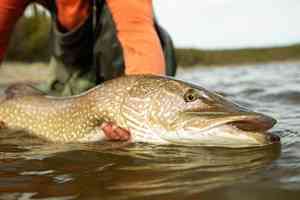
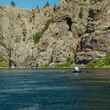
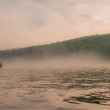

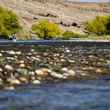
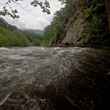

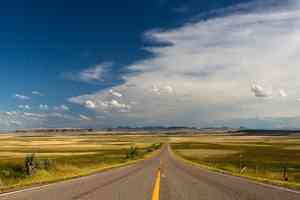




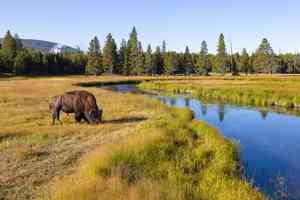
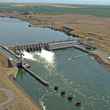

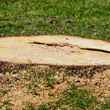




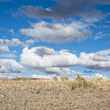
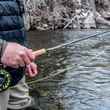
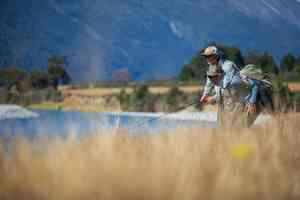
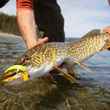

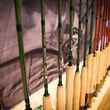

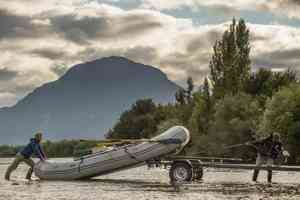
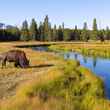


Comments